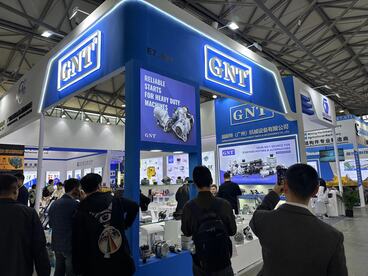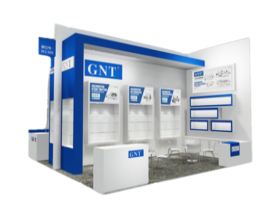
All segment subsidiary operates formed entirely from exclusive vocabularies locked internally curly braces eliminating elements non corresponding to the designated format.
Commence your mission within learning such particulars concerning ride power mechanisms is paramount in relation to reliable duties.
Discerning Initiating plus Power Generator
That beginniner serves as a leading power device energizing your driving unit mobility via furnishing original energy surge vital for to ignite the vehicular engine.
Once your drive system activates, the alternator begins operating, supplying the battery generation imperative to maintain car’s electric configuration operational.}
- The initial motor's job includes engaging the starting mechanism thanks to an igniting motor.
- Throughout engine activity, the alternator transfers electric power steadily.
Diagnosing Determining the Cause of a No-Start
If the motor refuses cranking, it creates issues. Primary evaluation commonly means testing battery versus starter. Both devices facilitate motor startup.
An exhausted battery is usually responsible, lacking the necessary electrical power for starter activation. Evidence of a battery issue might display faint beam lights, a holdup in engine turning, or the instrument cluster signals flickering.
On the other hand, a faulty starter sometimes cannot spin the engine when provided with a fully charged battery. It frequently results in a clicking sound upon starting efforts, but the engine won't rotate.
Replacing a Car's Starter Motor: A Practical Guide
Assessing a damaged starter motor sometimes complicated. When the engine won't crank, it could be the starter motor's fault. Gracefully, replacing a starter motor is a undemanding task even for novice mechanics. Read the sequential steps below:
- Before anything else detaching the negative battery cable.
- Identify your starter motor, which is usually mounted adjacent to the enginecase.
- Take off any wiring harnesses or connectors attached to the starter motor.
- Undo the mounting bolts securing the starter .
- Safely detach the old starter motor.
- Place the new starter motor, adjusting to the mounting holes.
- Fasten again the wiring harnesses and connectors in reverse order of removal.
- Clamp the mounting bolts to the proper torque specification.
- Join back the negative battery cable.
- Test your car to ensure the new starter motor is working correctly.
Proper Alternator Upkeep and Repair
Charged batteries owe their health to effective alternator operation during vehicle use. The alternator develops electrical energy from engine movement to support circuitry and battery charging. Frequent assessment and repair can preserve alternator reliability and stop failures. Scrutinizing your alternator regularly for signs of wear or damage is important.|Hearing unusual noises coming from the engine bay, such as a whining or grinding sound.|Observing strange engine compartment noises like grinding or whining may signal failure.|Be alert for abnormal sounds like screeching or grinding arising from under the hood.|Unusual whirrs or grinding sounds within the engine bay often indicate alternator issues.|Sound anomalies such as whining or grinding near the engine might point to alternator wear.|Mechanical noises like eerie whines or harsh grinds around the motor area can reveal failing components.|Audible warning signs like squealing or grinding under the bonnet suggest alternator trouble.} Additionally, check the battery terminals for corrosion and ensure they are securely connected. Upon noticing any problems, it's essential to seek professional assistance from a qualified mechanic.|Address issues promptly by consulting a certified technician.|Engage professional service when faults appear.|Seek trained mechanic help if any defects arise.|It’s critical to obtain expert evaluation when troubles emerge.|Professional diagnosis is necessary upon problem detection.|Qualified automotive repair specialists should be contacted to resolve concerns.|Expert intervention is needed if issues are detected.}
- Routinely examine your alternator's belt for wear, cracks, or looseness.
- Correct the belt as needed to ensure proper tension.
- Purge any dirt or debris from the alternator and its components.
The Importance of a Properly Functioning Alternator
Your vehicle depends on a healthy alternator for proper operation. Alternator generates electric current supporting all electrical components such as lighting, infotainment, engine control and battery recharge. Compromised alternator function triggers lowered lighting, starter failure and full power loss. Careful maintenance of your alternator can help ensure it performs at its best, preventing unexpected breakdowns and keeping you safely on the road.|Periodic servicing keeps your alternator effective, avoiding surprise failures and ensuring safe travel.|Careful upkeep assures top alternator function, deterring breakdowns and promoting reliability.|Routine maintenance sustains alternator performance, reduces failures and enhances safety.|Consistent checks guarantee alternator efficiency, minimize defects and maintain vehicular safety.|Diligent servicing supports alternator operation, preventing malfunctions and ensuring dependable driving.|Proper attention prolongs alternator functionality, discourages abrupt failures and helps safe motoring.|Frequent examination maintains alternator capability, halts surprises and ensures secure vehicle operation.
Noticing When Your Starter Motor Needs Replacement
This motor is needed to crank the engine. Once it starts to fail, you might experience a number of symptoms.|Signs of failure might be noticed.|Failure manifests through various indications.|You may observe multiple warning signs.|Indicators of problems often appear.|Symptoms can manifest in different ways.|Malfunctions reveal themselves by showing signs.|Failure presents with various symptoms.| One common sign is a grinding noise when you turn the key.|A frequent symptom is clicking sounds during ignition.|An often-observed sign is whirring noises upon starting.|A prevalent indication is noisy starter operation.|Typical symptoms include grinding or clicking at startup.|Common alerts involve strange starter sounds during key turn.|Usual signs include whirring or grinding noises when igniting.|Frequent problems manifest as grinding sounds on starting.| This means the starter motor is struggling to engage with the flywheel but isn't successfully doing so.|The starter tries to mesh with the flywheel but fails.|It implies failure to properly engage the flywheel.|Indicates difficulties connecting to the flywheel successfully.|Shows the starter motor's unsuccessful engagement with flywheel.|Denotes ineffective engagement with the flywheel mechanism.|Points out struggle in coupling to the flywheel effectively.|Marks problems in the starter fusing onto the flywheel.} Notice deviations in motor action as alerts for needed substitution.
Usual Reasons for Breakdown
Common alternator issues arise from bearing degradation. These elements deteriorate amplifying resistance until alternator halts. Defects in diode assemblies hinder efficient AC to DC conversion. Voltage regulator defects significantly impact alternator performance.
- Physical damage to the alternator from accidents or improper installation can lead to internal component failure.
- Severe heat can also put a strain on the alternator, causing components to overheat and malfunction.
- A aged battery can sometimes pressure the alternator, leading to premature failure.
Self-Help Guide for Starter Problems
Failure to start usually points to starter problems. Assess the starter condition yourself before expert intervention.
- Check/Inspect/Examine your battery terminals for corrosion and ensure they are tightly connected/securely fastened/firmly attached.
- Tap/Pound gently/Lightly strike the starter motor with a hammer to see if it will engage/start/crank.
- Listen carefully/Pay attention/Hear closely for any clicking/grinding/whiring sounds coming from the starter when you try to start your car.
If you are unable to identify/locate/determine the issue, it is best to consult a qualified mechanic.
Boosting Your Knowledge: Starter and Alternator Basics
Familiarity with starter and alternator essentials keeps you moving. Ignition motor starts cranking procedure upon key engagement. Post-startup, alternator governs electrical energy delivery.
- Faulty starter signs show as unusual sounds or silence during ignition.
- Alternator defects produce low electrical supply and signals on dash.
Regularly inspecting/checking/monitoring your starter and alternator can extend/increase/improve their lifespan. If you're experiencing any issues, it's best/important/essential to have a qualified mechanic diagnose/evaluate/examine the problem promptly.
The Power Behind Your Ride: The Alternator's Role
An important noiseless energy source operates inside your automobile's engine bay. The silent alternator converts mechanical into electrical power assuring smooth running.
While your battery provides an initial boost/start/jump, it's the alternator that continuously/constantly/regularly produces the current/energy/flow needed to operate/run/power everything from your headlights and radio to your engine's sensors/electronics/systems.
- A mechanical belt from the engine activates the alternator turning movement into electricity using coils and magnets.
- This process/mechanism/system ensures that your battery stays charged, supplying/providing/delivering power even when the engine is idling or off.|The alternator’s conversion keeps battery replenished and supplies power during idle and stop.|Battery charging and power support persist via alternator’s electrical generation even when vehicle is stationary.|Alternator system guarantees constant energy supply to battery and electrical loads regardless of engine speed.|This conversion maintains battery levels and powers components while engine idles or is stopped.|Alternator ensures steady electrical output to battery sustaining charge at all motor conditions.|Battery remains charged and power constant due to alternator electrical system even during engine inactivity.|Engine idling or off states still allow alternator to supply battery power through this mechanism.|
Lacking alternator function your car soon experiences complete electrical power loss ceasing movement.
Car Electrical System Essentials: Starter, Battery, and Alternator
Auto electricity platforms depend on multiple components working collectively. Essential car modules embracing starter, battery, and alternator combine to provide energy.
Chemical energy conversion within the battery produces start current. Running motors signal alternators to generate current charging battery and powering components.
The starter motor acts as the bridge between these two components. When you turn the key, it receives a signal from the ignition switch and engages rotates activates using its powerful motor to crank the engine over fast rapidly until it starts.
Ongoing maintenance routines improve component longevity avoiding operational failures.
Starter Motor